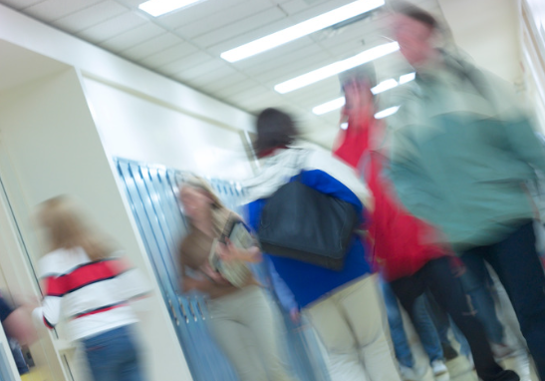Students need more space

©Hemera Technologies via Canva.com.
May 26, 2023
This previously ran in our April 2023 print issue.
Whether it’s in the halls, eating lunch, or sitting in class – there’s no shortage of students at Emmaus High School. While the student population continues to grow, a new concern comes to light: overcrowding.
In the 2022-2023 school year, Long Range Fiscal and Capital Plan, created by the East Penn School District, the Emmaus High School building has a capacity of 2,442 students. As of the summer of 2022, there are 2,774 students enrolled at Emmaus, putting Emmaus at 332 students over capacity – a number that has grown over the course of the school year.
Emmaus sophomore Anna Marchetto noticed overcrowding in the halls.
“It takes a lot longer to get places because of how crowded it is,” Marchetto said. “It’s very frustrating trying to get literally anywhere and it’s blocked and clogged and people stand in the hallways, and it’s just not a good experience.”
Freshman Lindsey Heiserman disagrees, saying that overcrowding isn’t a major issue at Emmaus.
“I haven’t noticed [overcrowding]. I think all schools are pretty full,” Heiserman said. “I don’t think it really negatively affects my experience.”
Overcrowding has been shown to cause student performance to deteriorate. The National Assessment of Educational Progress (NAEP), also officially known as the Nation’s Report Card, notes that students who attend public schools that are not overcrowded have scores that are significantly higher than students who attend schools with overcrowded classrooms.
Outside of grade performance, the Community Environmental and Defense Services state that “overcrowding creates unsafe environments that makes teaching and learning more difficult.”
Junior La-Niejah “Nie” Williams Rey notes how inconvenient overcrowding makes the Emmaus experience.
“It’s hard to get to class, it’s hard to get lunch, and just in general,” Rey said. “There’s way too many people.”
Emmaus has begun to address capacity issues already: in March of 2022, KCBA Architects began working with the school board to formulate renovation plans.
On Feb. 23, 2023, the Emmaus Facility Inquiry Team met discussing renovation plans. As reported in the meeting minutes, the high school team is “still in deliberation mode.”
Steve Behrens, an Education Consultant from Breslin Architects, attended the meeting, discussing renovation options, and providing further data on Emmaus’s capacity. Included in his presentation, Behrens listed the projected enrollments and their relation to Emmaus capacity.
Emmaus has a PDE Capacity of 2,800. PDE Capacity refers to the capacity of all classrooms combined, with a student capacity of 25 each. According to Behrens, over the next five years, Emmaus is projected to have an even larger enrollment of 2,941 students – meaning the overcapacity issue isn’t just a fleeting phase. The renovations would expand the school, and in turn, increase the capacity enough to accommodate many more students.
Even so, building renovations are far from immediate, and many students look for more urgent action against overcrowding.
“More enforcing in hallway regulations [would help],” Marchetto said. “Making sure everybody knows the common things – like walking on the right side of the hallway and stuff like that.”
Heiserman notes that the hallways can be disorganized, and that they should be addressed.
“You can either make the school bigger or have fewer students,” Heiserman said. “So, yes, I’m in favor of the renovations.”
She also agrees that more hall monitors may help.
“I think if they increased the amount of hall monitors it would work. I think it would help organize kids.”
Overcrowding is not just an issue for learning but also for safety. With more students packed into smaller spaces, evacuation is slowed. Additionally, tighter quarters means illness is spread throughout the school faster. When more people are packed into one area for an extended amount of time – like a study hall in the auditorium or the cafeteria during a full lunch – students are more likely, according to the National Library of Medicine, to experience adverse health outcomes like infectious diseases and mental health problems.
While Emmaus can not stop the natural growth of the student population, it is faced with accommodating the rise in students and renovating the building to get student enrollments back under capacity.










